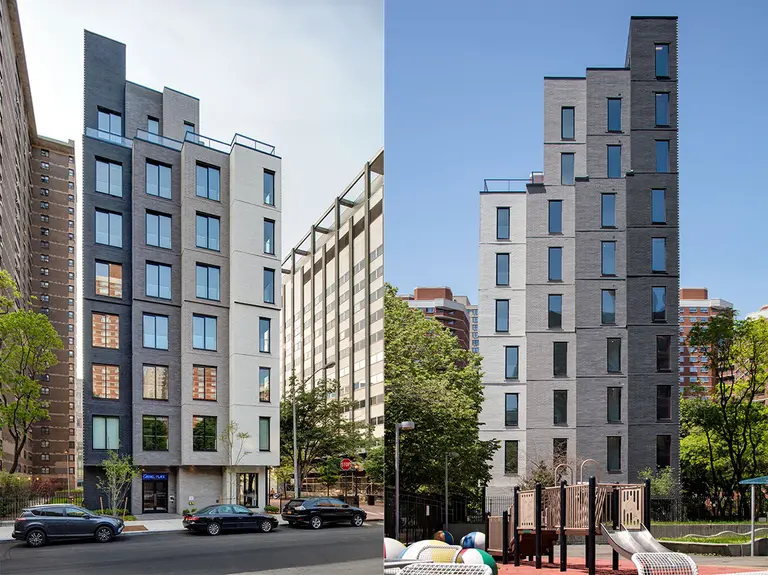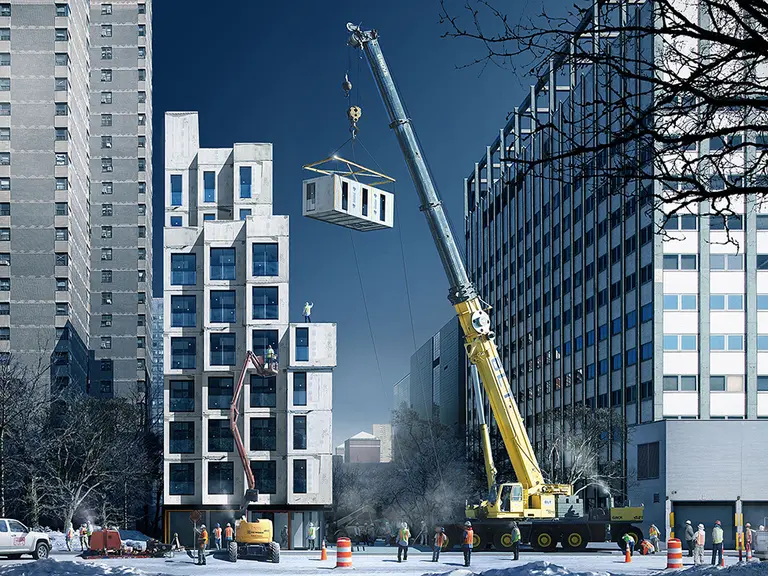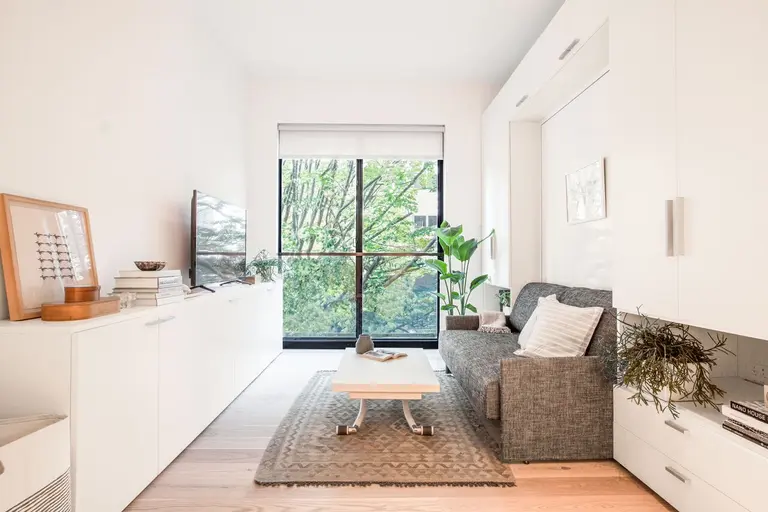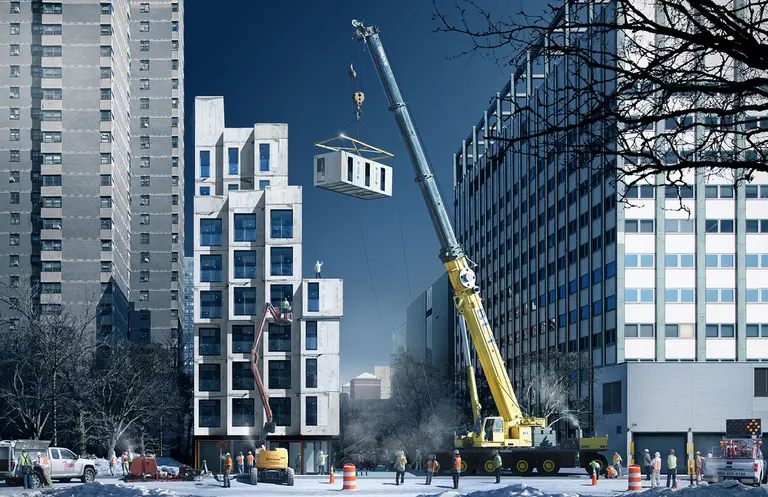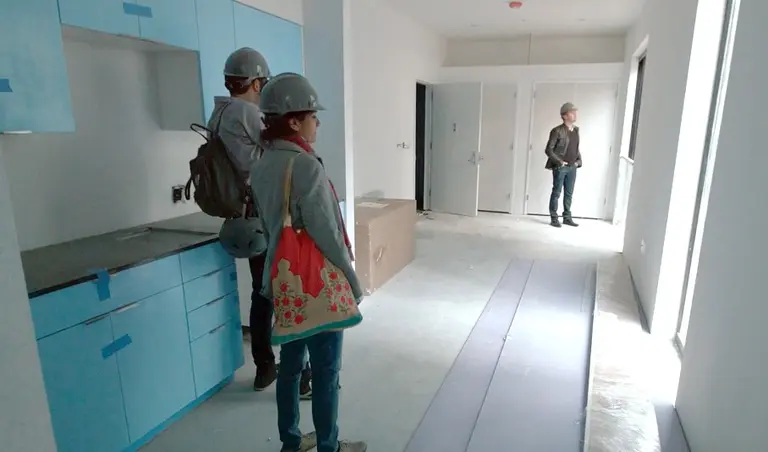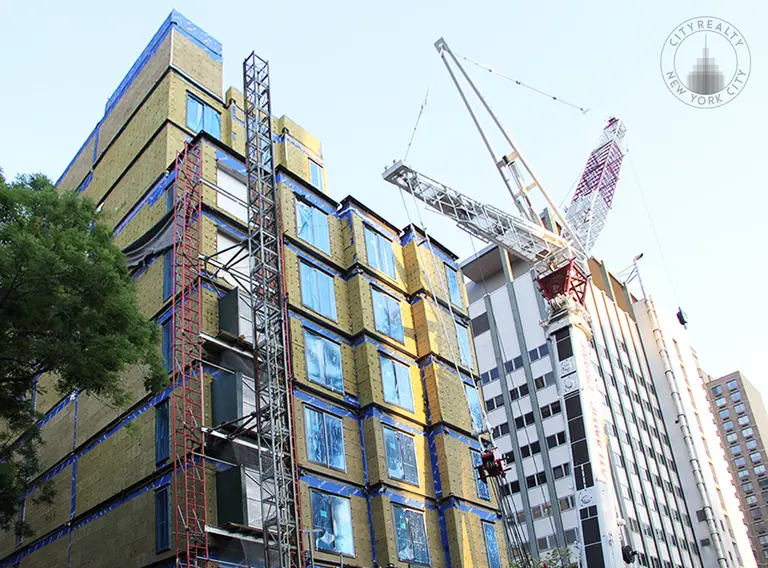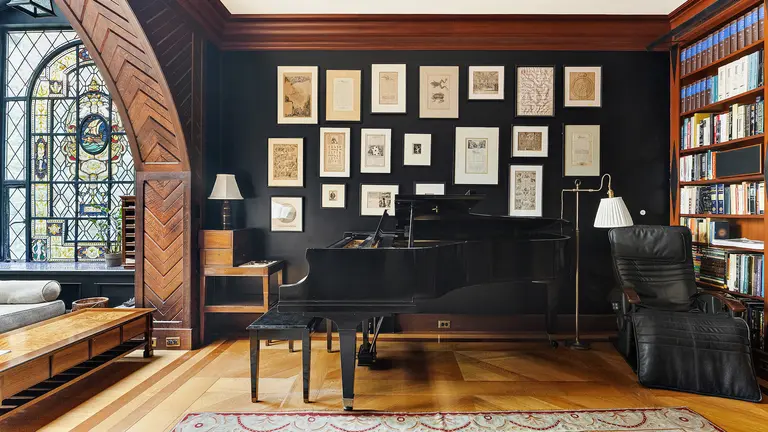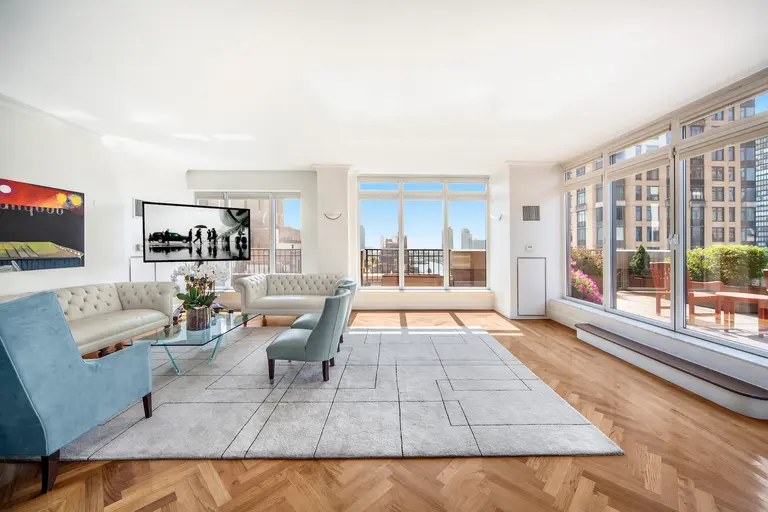Why Micro-Apartments in Carmel Place Are So Expensive
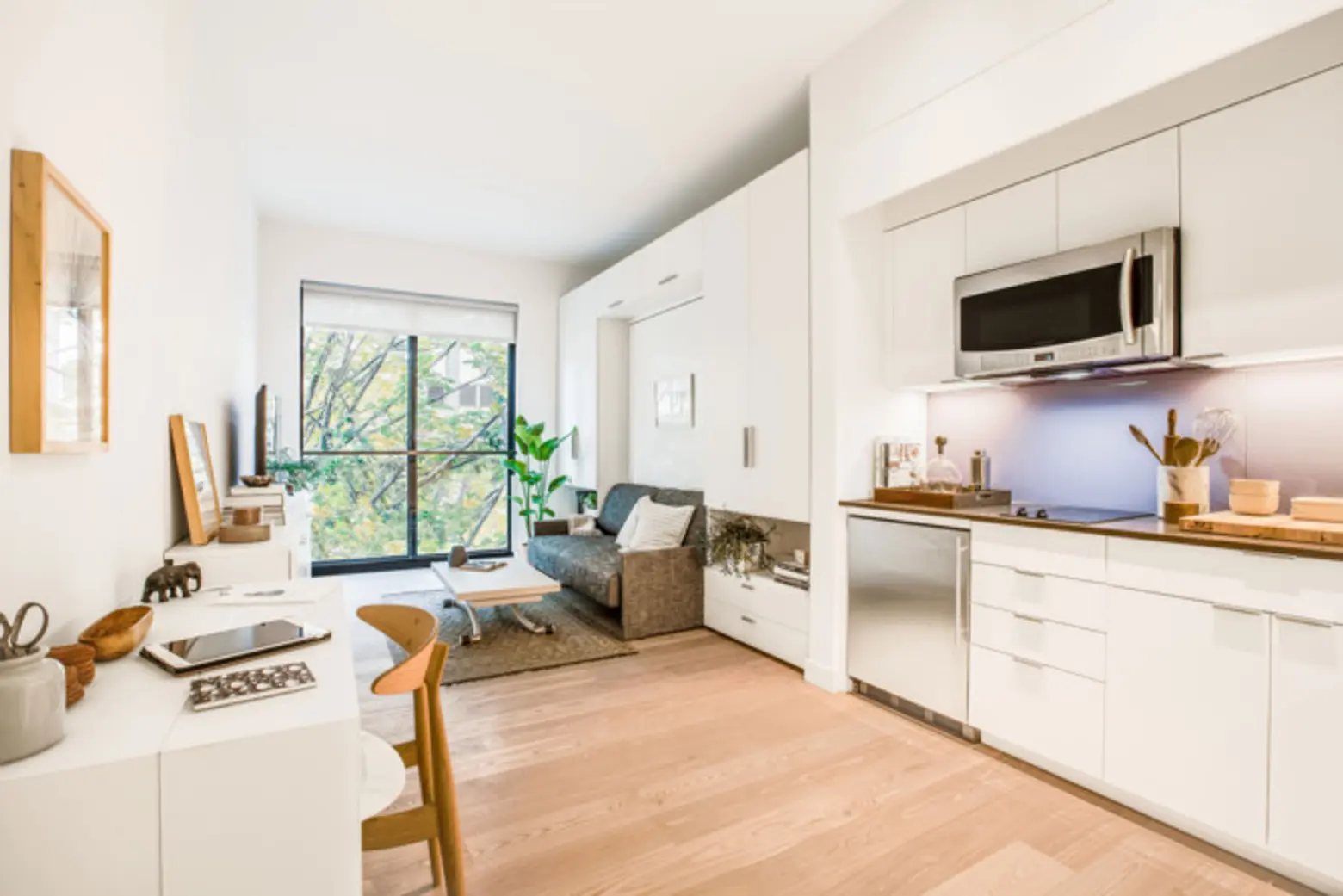
We’ve been hearing a lot recently about the city’s new micro-apartments. As 6sqft has reported, NYC’s first micro-apartment complex Carmel Place (formerly My Micro NY) at 335 East 27th Street began leasing at the end of last year. The nine-story modular development in Kips Bay has 55 studios that are 260 to 360 square feet. Of these, 22 are affordable and they’ll go from $950 to $1,500 a month.
Market-rate units on the other end range from $2,540 to $2,910. According to CityRealty, the average rental price per square foot for New York City apartments overall is $51, while Carmel Place units ring in at $98 per square foot. The idea of micro-housing was presented, in part, to address the need for more affordable apartments. So why is it that the result is what a recent New Yorker article calls “micro-luxury” housing?
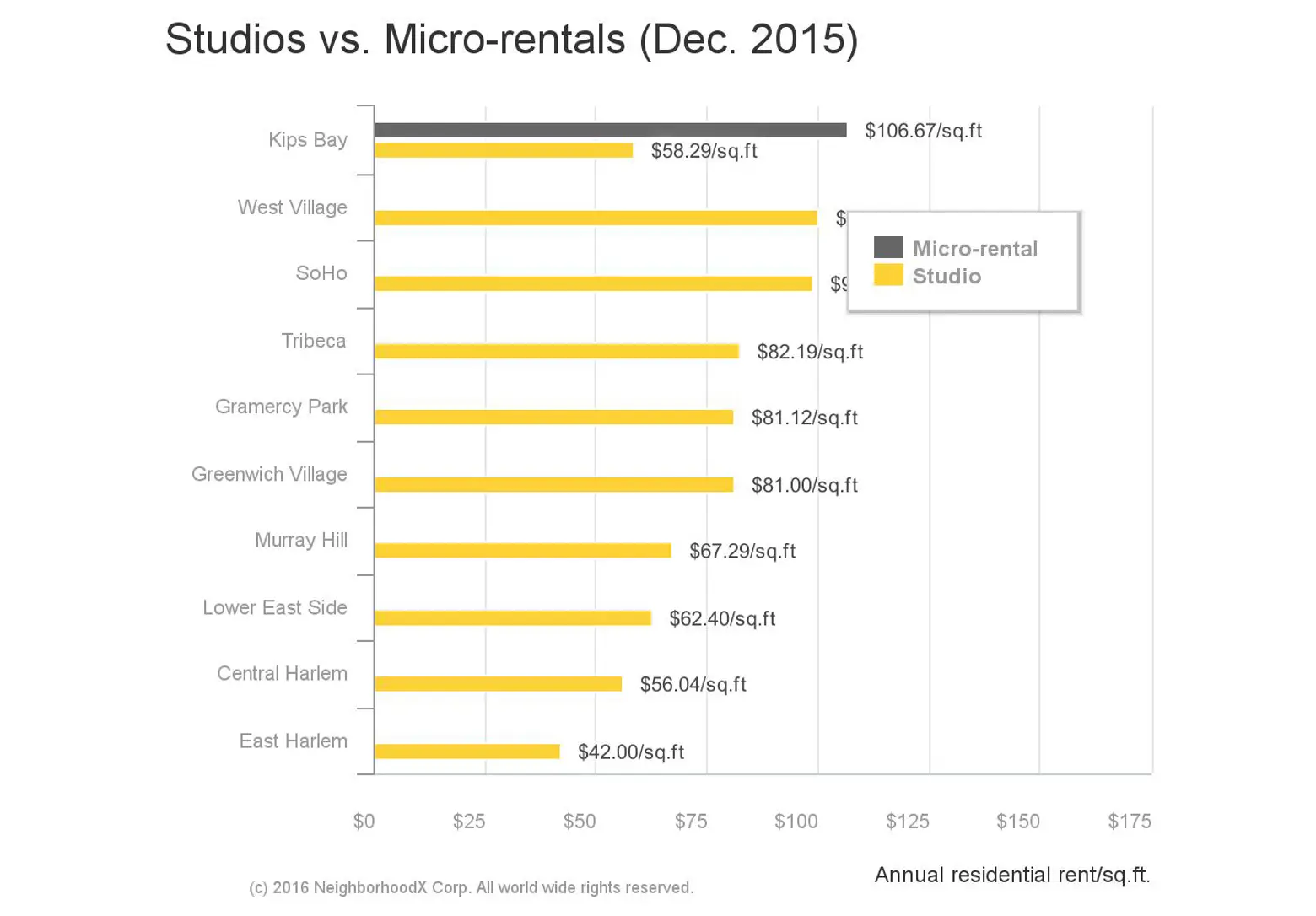 Graph created by NeighborhoodX. Click here to find out more >>
Graph created by NeighborhoodX. Click here to find out more >>
In an attempt to shake off a history of dark tenements and SROs, the city passed a law in 1987 that prohibited the construction of apartments less than 400 square feet; Mayor Bloomberg waived the rule for the 55 units comprising Carmel Place, prompting an outcry from critics who feared that cramped quarters would again become standard housing for the less fortunate. (The city also introduced new zoning regulations last fall that would remove the above-mentioned minimum. City Council will vote in March on the regulations, which would prevent another building made up entirely of micro-units, but might allow for micro-apartments to be incorporated into market-rate and low-income multi-family dwellings.)
Carmel Place was first seen as a means to provide, among other things, affordable housing, and though the complex was built on 5,000 square feet of city-donated land, the focus had been on how to creatively design the units to make micro-living as comfortable and attractive as possible. The project’s designers, nArchitects, got creative with ways to make the spaces feel bigger and more usable with lots of light, convertible furniture and stylish murphy beds.
The idea, champions of the new apartments say, was not to start with the stigma: If the first micro-apartments were bare-bones but affordable, they might quickly be called out as a means to subject low income residents to unpleasant living conditions–what the New Yorker calls “damaging the micro brand.” The emphasis on creative design and convenient amenities are instead being seen as a desirable option worthy of a premium price. An affordable “shoebox,” (quoting a recent bookstore rant by writer and overall-eagle-eye Fran Liebowitz) is more likely to come under fire for its unacceptable conditions than an expensive one.
However, lesser known is the fact that Carmel Place comes with “poor-door” divisions: Included in the rent for market-rate tenants are amenities like weekly cleaning service and an app-based “butler” called Ollie (for “all-inclusive”) to fetch dry cleaning and groceries, in addition to Wifi, cable and sleek furniture. But the affordable tenants don’t get those perks (one exception: amenities are included for eight homeless veterans who’ll receive units with Section 8 vouchers).
Regardless, the demand for affordable housing shows no signs of abating. To determine who gets Carmel Place’s fourteen subsidized units, the city held a lottery in the fall and 60,000 people applied. In a city where many pay half of their income or more on rent, a “shoebox of one’s own” might look like a pretty good deal.
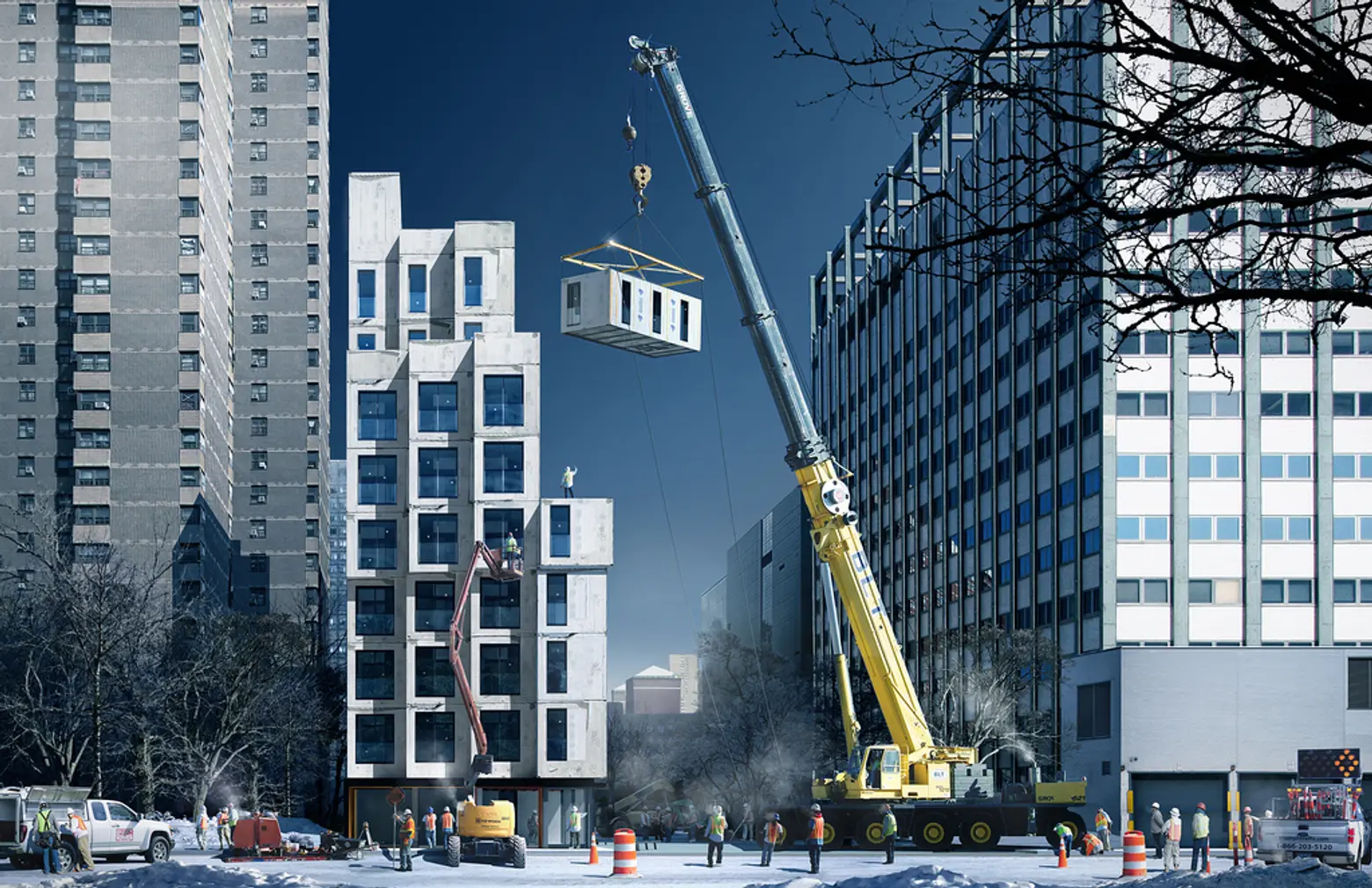
[Via The New Yorker]
RELATED:
